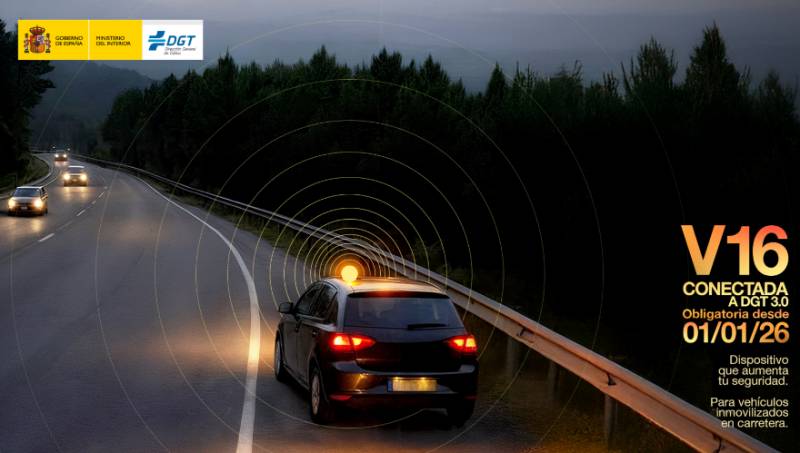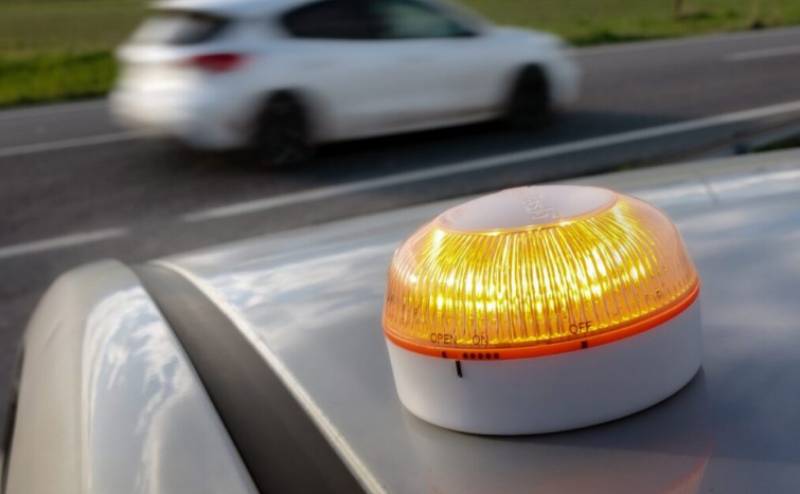- Region
- Vega baja
- Marina Alta
- Marina Baixa
- Alicante
- Baix Vinalopo
- Alto & Mitja Vinalopo
-
ALL TOWNS
- ALICANTE TOWNS
- Albatera
- Alfaz Del Pi
- Alicante City
- Alcoy
- Almoradi
- Benitatxell
- Bigastro
- Benferri
- Benidorm
- Calosa de Segura
- Calpe
- Catral
- Costa Blanca
- Cox
- Daya Vieja
- Denia
- Elche
- Elda
- Granja de Rocamora
- Guardamar del Segura
- Jacarilla
- Los Montesinos
- Orihuela
- Pedreguer
- Pilar de Horadada
- Playa Flamenca
- Quesada
- Rafal
- Redovan
- Rojales
- San Isidro
- Torrevieja
- Comunidad Valenciana
article_detail
Date Published: 19/11/2025
How to spot a fake V-16 emergency light in Spain and avoid a big fine
Knock-off beacons not approved by traffic authorities in Spain are flooding the market ahead of the January deadline

From January 1 next year, every vehicle in the country (with a few minor exceptions) must carry an approved and connected V-16 emergency beacon instead the old warning triangles. The idea is that if you break down or have an accident, this small device automatically transmits your exact location to the DGT 3.0 system in real time, alerting other drivers and emergency services without you having to step out onto a dangerous road.
The problem is that with the deadline fast approaching, the market has been flooded with V-16 lights that look the part but don't actually meet the legal requirements. Consumer watchdogs and road safety organisations are sounding the alarm that major online platforms and retailers are selling approved and non-approved models side by side, often without making it remotely clear which is which.
For drivers trying to do the right thing and get ahead of the January crowds, it's becoming a bit of a minefield.
Approved V-16 emergency beacons have been rigorously tested by laboratories authorised by the Ministry of Industry, such as LCOE or IDIADA, and they must meet strict standards laid out in Directive MOV 2022/03.
That means they've been verified for high visibility in rain, fog and low light, they have sufficient battery life to last through an emergency and crucially, they can connect to the DGT's network to broadcast your location without needing your mobile phone or any external connection.
The connectivity is what sets a proper V-16 apart from the cheap knock-offs. Each approved beacon has its own integrated SIM card and geolocation system that works autonomously for at least 12 years. It should function even in areas where your phone has no signal, thanks to a dedicated network connection.
 There's been some misinformation floating around online suggesting that these beacons collect your personal data or vehicle details, but that's simply not true. The DGT doesn't gather information about who you are or what car you're driving. The system only sends out your exact location when you activate the device, nothing more.
There's been some misinformation floating around online suggesting that these beacons collect your personal data or vehicle details, but that's simply not true. The DGT doesn't gather information about who you are or what car you're driving. The system only sends out your exact location when you activate the device, nothing more.These beacons are also approved for use in any country that's signed the Vienna Convention on Road Traffic, which covers most of the world. That means you can drive into France, Andorra or Morocco without worrying about whether your emergency light is legal there.
Spotting a legitimate V-16 beacon takes a bit of attention to detail, but it's not complicated. The first thing to check is the approval code, which should be an alphanumeric number starting with either LCOE or IDIADA. This marking must be engraved or printed directly onto the casing of the device, never on a removable sticker. If it's just a label that can peel off, walk away.
The device also needs to clearly state that it has IoT connectivity and links to DGT 3.0. Without that feature, it's just an expensive torch.
Price can be a useful indicator as well. Genuine connected and approved V-16 beacons typically cost between €40 and €50, whereas the invalid models tend to hover around the €20 mark. If something seems suspiciously cheap, there's probably a reason for it.
If you want to be absolutely certain, the DGT has an official list of authorised models on its website. Taking a few minutes to cross-reference the product you're considering against that catalogue could save you a lot of hassle down the line.
If you’re caught driving around with a non-approved V-16 light after January 1, you're looking at a fine of up to €200. More importantly, if you break down or have an accident and your beacon isn't transmitting your location, you're left dangerously exposed on the roadside. Other drivers won't be warned that you're there, and emergency services won't know where you are.
The whole point of the new V-16 system is to keep you safe without forcing you to walk along a motorway in the dark to place triangles and a fake device defeats that purpose entirely.
Find all the latest motoring and travel news here or join our Driving in Spain Facebook group for regular updates
Images: DGT
staff.inc.ali
Loading
Sign up for the Spanish News Today Editors Roundup Weekly Bulletin and get an email with all the week’s news straight to your inbox
Special offer: Subscribe now for 25% off (36.95 euros for 48 Bulletins)
OR
you can sign up to our FREE weekly roundup!
Read some of our recent bulletins:
Discount Special Offer subscription:
36.95€ for 48 Editor’s Weekly News Roundup bulletins!
Please CLICK THE BUTTON to subscribe.
(List price 3 months 12 Bulletins)
Read more stories from around Spain:
Contact Murcia Today: Editorial 000 000 000 /
Office 000 000 000



















